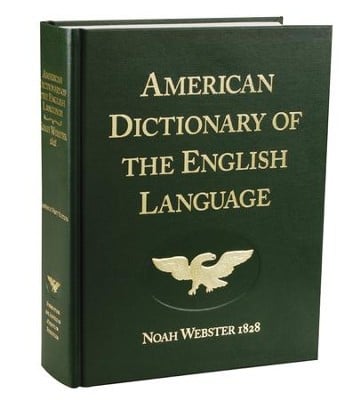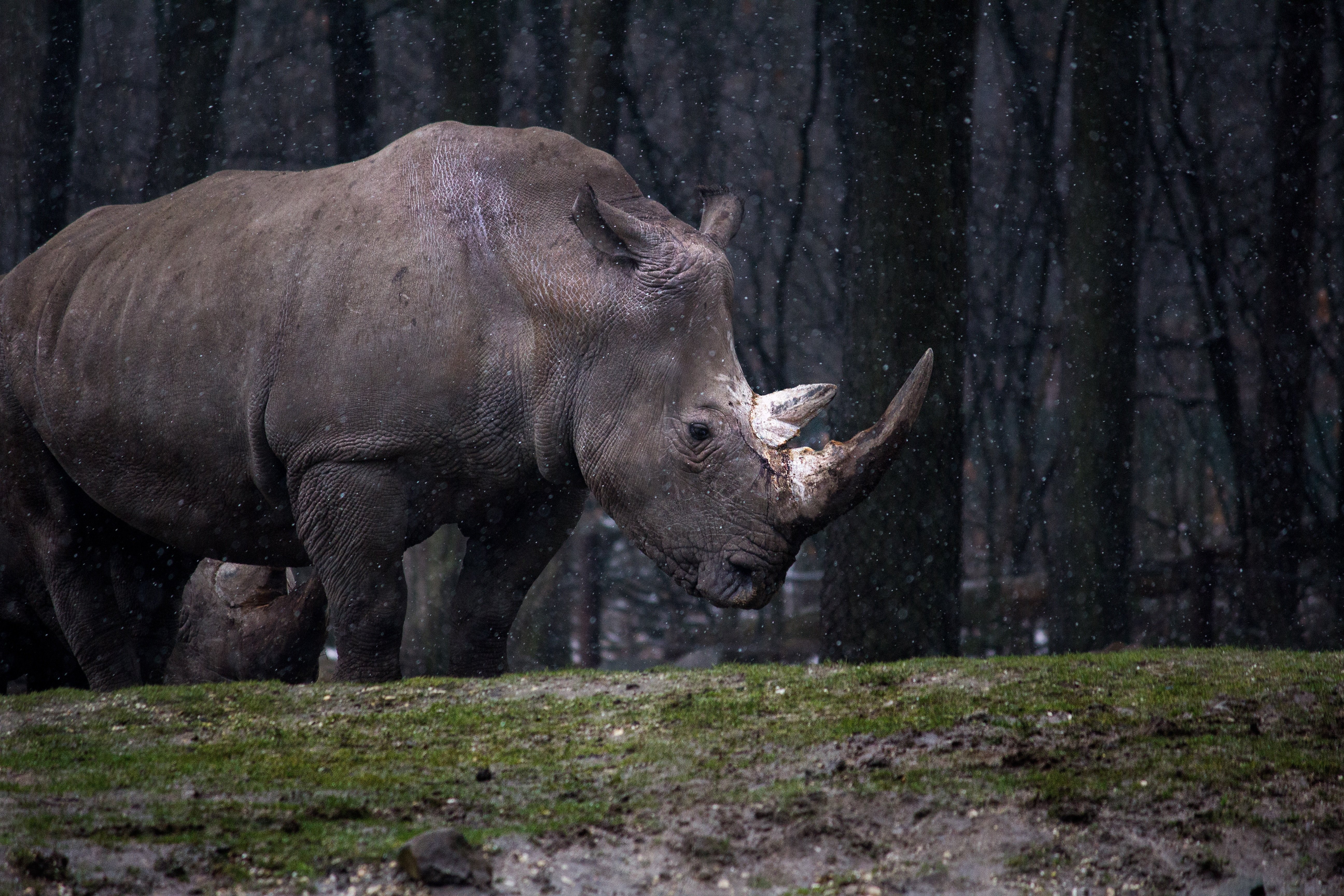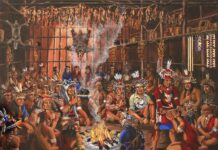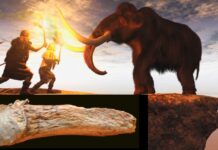Unicorns in the Bible—Mythical, Fairy Tale Creatures?
Unicorns are mentioned in the Bible nine times in the books of Numbers, Deuteronomy, Job, Psalms, and Isaiah and have become one of the “problematic” creatures referred to in Scripture. From our 21st-century understanding as presented in books and movies, we have come to think of this creature as a beautiful, magical, mythical horse. Thus, it has become an excuse for scoffers to dismiss the Bible as a book of fairy tales. However, a closer examination of the word’s origin and original English definition may give us a different picture.

The very first edition of Noah Webster’s dictionary in 1828 lists “unicorn” with the following definition: “an animal with one horn, the monoceros. This name is often applied to the rhinoceros.” Notice that this definition says absolutely nothing about a horse, or a horse-like animal, or Greek mythology, or a mythical or fictitious creature. This definition simply states that this is a name that is often applied to the rhinoceros.
Yet, our present-day understanding of a rhinoceros is that of a two-horned animal. If we look up the word “rhinoceros” in the same 1828 dictionary, it defines rhinoceros as: “A genus of quadrupeds of two species, one of which, the unicorn, has a single horn growing almost erect from the nose. This animal when full grown is said to be 12 feet in length. There is another species with two horns, the bicornis.
 They are natives of Asia and of Africa.” According to Noah Webster, back in the early 1800s, it was understood that there were two species of the rhinoceros. The one-horned species was called unicorn and the two-horned species was called bicornis.
They are natives of Asia and of Africa.” According to Noah Webster, back in the early 1800s, it was understood that there were two species of the rhinoceros. The one-horned species was called unicorn and the two-horned species was called bicornis.
Still today, the scientific name of the Asian one-horned rhinoceros is rhinoceros unicornis, and the scientific name for a two-horned rhinoceros is diceros bicornis.
Both unicornis and bicornis are Latin words. Let’s look at these two words as found in the Latin Bible in two different Bible passages.
 In Psalm 92:10, the psalmist is praying and says, “But my horn shalt thou exalt like the horn of an unicorn.” Looking at this verse in a Latin Bible, the word “unicorn” is unicornis, the same scientific Latin name of the present-day Asian one-horned rhinoceros. The King James Bible translators transliterated this word “unicornis” as “unicorn.”
In Psalm 92:10, the psalmist is praying and says, “But my horn shalt thou exalt like the horn of an unicorn.” Looking at this verse in a Latin Bible, the word “unicorn” is unicornis, the same scientific Latin name of the present-day Asian one-horned rhinoceros. The King James Bible translators transliterated this word “unicornis” as “unicorn.”
Looking at Deuteronomy 33:17 in a Latin Bible, this verse uses the Latin word rinocerotis, referring to a two-horned rhinoceros.
“His glory is like the firstling of his bullock, and his horns are like the horns of unicorns: with them he shall push the people together to the ends of the earth: and they are the ten thousands of Ephraim, and they are the thousands of Manasseh.”
The King James translators transliterated this word, “rinocerotis” as “unicorn;” exactly the same as they transliterated unicornis as “unicorn.” We must be careful when referring to transliterated words in the text, as in this case two different words were transliterated as the same word.
In this Deuteronomy passage which uses the word rinocerotis, Moses is giving a blessing to each of the 12 sons of Jacob. When he gives a blessing to Joseph, he declares that Joseph’s sons would be like the horns of the rinocerotis. Joseph’s two sons did become as the two horns of a rhinoceros with one big horn and one little horn. Moses prophecies that Manasseh, the elder son, would become the father of thousands, and Ephraim, the younger son, would become the father of tens of thousands. The use of this particular word actually clarifies the passage, because the two-horned rhinoceros has a larger horn and a smaller horn. This prophecy seems backwards, giving the greater blessing to the younger son rather than to the elder son, the first-born. Let’s investigate further.
 The King James Bible translators used “unicorns,” (plural with an “s”) in this Deuteronomy passage where a marginal note appears. It reveals that in the Hebrew text, the word is actually a singular word, “unicorn.” However, while the word being translated “unicorn” is singular, the word being translated “horns” is a plural possessive. It’s saying that these plural horns are possessed by the singular unicorn, which would mean that in the Latin, it’s not actually an unicornis, but a rinocerotis. In the English, it’s not actually a unicorn (one animal with one horn), but a rhinoceros (one animal—Joseph, with two horns—two sons.)
The King James Bible translators used “unicorns,” (plural with an “s”) in this Deuteronomy passage where a marginal note appears. It reveals that in the Hebrew text, the word is actually a singular word, “unicorn.” However, while the word being translated “unicorn” is singular, the word being translated “horns” is a plural possessive. It’s saying that these plural horns are possessed by the singular unicorn, which would mean that in the Latin, it’s not actually an unicornis, but a rinocerotis. In the English, it’s not actually a unicorn (one animal with one horn), but a rhinoceros (one animal—Joseph, with two horns—two sons.)
Back in Genesis 48:19, Jacob prophesied that Ephraim (the younger) would be greater than Manasseh (the elder, the first-born.) He said that Manasseh “shall be great,” but that Ephraim “shall be greater.” He said that Manasseh “shall become a people,” but that Ephraim “shall become a multitude of nations.” That is exactly what happened, and the prophecy was fulfilled, exactly as the Bible predicted, exactly as the picture the rinocerotis, transliterated as unicorn, visualized.
With this knowledge of the meaning of the biblical unicorn, each of the nine passages in which we find an animal called a “unicorn” or “unicorns” may be studied with a far greater understanding of the text’s meaning. Each passage hones in on how powerful God, the creator of the universe, truly is.
While the perfect identity of the creatures called “unicorn” and “unicorns” in the English King James Bible may be explored even further, far more important is the reality that the creatures existed. The Bible clearly describes real animals—not fantasy animals as have been popularized by many books and movies—and uses these strong creatures to further demonstrate the power of God.
When we read the word “unicorn” in the Bible with its original meaning and intent, it presents the biblical unicorn as a powerful animal possessing one or two strong horns. Rather than making the Bible seem unworthy of trust due to referencing some mythical, fairy tale creatures, the biblical unicorn authenticates the reality that this miraculous book accurately records prophecies which are meticulously fulfilled in every detail! Thus, the biblical unicorn yet further demonstrates the Bible as the trusted, ultimate source of truth and authority.
About the Author: Eric Hovind
Eric Hovind grew up immersed in the world of apologetics and following college graduation in 1999, he began full-time ministry. President and Founder of Pensacola-based organization, Creation Today, Eric’s passion to reach people with the life-changing message of the Gospel has driven him to speak in five foreign countries and all fifty states. He lives in Pensacola, Florida with his wife Tanya and three children and remains excited about the tremendous opportunity to lead an apologetics ministry in the war against evolution and humanism.
Other Names Associated with Unicorn or Beasts
RE’EM

“A re’em, also reëm (Hebrew: רְאֵם), is an animal mentioned eight times in the Hebrew Bible[1] and variously translated as a unicorn or a wild ox. It was first identified in modern times with the aurochs by Johann Ulrich Duerst who discovered it was based on the Akkadian cognate rimu (𒄠 in cuneiform), meaning Bos primigenius, the aurochs, progenitor of cattle.[2] This has been generally accepted,[3] as it is today even among religious scholars. It has been translated in some Christian Bible translations as “oryx” (which was accepted as the referent in Modern Hebrew) and as “unicorn” in the King James Version, possibly referring to a one-horned rhinoceros such as Rhinoceros unicornis.[4],,,
Some Bible translations into English, including the American Standard Version and New American Standard Bible, interpret re’em as “wild ox”. Re’em is also speculated to refer to the Arabian Oryx.

In Jewish folklore, the re’em was larger than a mountain and could dam the river Jordan with its dung. To survive during the deluge, Noah had to strap its horns to the side of the Ark so that its nostril could protrude into the Ark allowing the animal to breathe. King David, while still a shepherd, mistook its horn for a mountain and climbed it, then the re’em got up, carrying David up to the heavens. He prayed to God to save him, so a lion passed in front of the re’em. As the re’em bowed down to the king of beasts, David climbed off, but was threatened by the lion. He prayed again and an animal passed by so the lion could chase it and leave David unharmed.[5] These stories are fables and do not appear in the Biblical narrative.
The Re’em is also mentioned in metaphorical terms in Tractate Zebahim 113b saying in short that it took a tremendous miracle for one to actually survive the deluge. The association may be linked to the mythical beast, Behemoth, described in other areas of Jewish mythology, aggada, and Kabbala due to the striking parallels between the two beasts.” Wikipedia Re’em
Aurochs

Aurochs, (Bos primigenius), also spelled auroch, extinct wild ox of Europe, family Bovidae (order Artiodactyla), from which cattle are probably descended. The aurochs survived in central Polanduntil 1627. The aurochs was black, stood 1.8 metres (6 feet) high at the shoulder, and had spreading, forward-curving horns. Some German breeders claim that since 1945 they have re-created this race by crossing Spanish fighting cattle with longhorns and cattle of other breeds. Their animals, however, are smaller and, though they resemble the aurochs, probably do not have similar genetic constitutions.
The name aurochs has sometimes been wrongly applied to the European bison, or wisent (Bison bonasus).” EXTINCT MAMMAL WRITTEN BY: The Editors of Encyclopaedia Britannica
“Assyrian archaeology provides one other possible solution to the unicorn identity crisis. The biblical unicorn could have been an aurochs (a kind of wild ox known to the Assyrians as rimu).7 The aurochs’s horns were symmetrical and often appeared as one in profile, as can be seen on Ashurnasirpal II’s palace relief and Esarhaddon’s stone prism.8 Fighting rimu was a popular sport for Assyrian kings. On a broken obelisk, for instance, Tiglath-Pileser I boasted of slaying them in the Lebanese mountains.9
Extinct since about 1627, aurochs, Bos primigenius, were huge bovine creatures.10 Julius Caesar described them in his Gallic Wars as,
. . . a little below the elephant in size, and of the appearance, color, and shape of a bull. Their strength and speed are extraordinary; they spare neither man nor wild beast which they have espied. . . . Not even when taken very young can they be rendered familiar to men and tamed. The size, shape, and appearance of their horns differ much from the horns of our oxen. These they anxiously seek after, and bind at the tips with silver, and use as cups at their most sumptuous entertainments.11 The aurochs highly prized horns would have been a symbol of great strength to the ancient Bible reader.” Answers in Genesis
Arabian Oryx

The Arabian oryx or white oryx (Oryx leucoryx) is a medium-sized antelope with a distinct shoulder bump, long, straight horns, and a tufted tail.[2] It is a bovid, and the smallest member of the genus Oryx, native to desert and steppe areas of the Arabian Peninsula. The Arabian oryx was extinct in the wild by the early 1970s, but was saved in zoos and private preserves, and was reintroduced into the wild starting in 1980. Wikipedia Arabian Oryx
The scientific name of the Asian one-horned rhinoceros is rhinoceros unicornis, and the scientific name for a two-horned rhinoceros is diceros bicornis.

Hyracodontidae, also known as “running rhinos”, showed adaptations for speed, and would have looked more like horses than modern rhinos. The smallest hyracodontids were dog-sized; the largest was Paraceratherium, one of the largest known land mammals that ever existed. The hornless Paraceratherium was almost seven metres high, ten metres long, and weighed as much as 15 tons. Like a giraffe, it ate leaves from trees. Hyracodontids spread across Eurasia from the mid-Eocene to early Miocene. https://en.wikipedia.org/wiki/Rhinoceros

Elasmotherium (“thin plate beast”) is an extinct genus of large rhinoceros endemic to Eurasia during the Late Pliocene through the Pleistocene, existing from 2.6 Ma to at least as late as 39,000 years ago in the Late Pleistocene.[2] A more recent date of 26,000 BP[3] is considered less reliable.[2] https://en.wikipedia.org/wiki/Elasmotherium
Three species are recognised. The best known, E. sibiricum, or Siberian unicorn was the size of a mammoth and is thought to have borne a large, thick horn on its forehead. Theories about the function of this horn include defense against predators, attracting mates, driving away competitors, sweeping snow from the grass in winter, and digging for water and plant roots.[4][5] Like all rhinoceroses, elasmothereswere herbivorous. Unlike any other rhinos, its high-crowned molars were ever-growing. Its legs were longer than those of other rhinos and were adapted for galloping, giving it a horse-like gait.
Narwhal

The narwhal (Monodon monoceros), or narwhale, is a medium-sized toothed whale that possesses a large “tusk” from a protruding canine tooth. It lives year-round in the Arctic waters around Greenland, Canada, and Russia. It is one of two living species of whale in the Monodontidae family, along with the beluga whale. The narwhal males are distinguished by a long, straight, helical tusk, which is an elongated upper left canine.
The most conspicuous characteristic of the male narwhal is a single long tusk, a canine tooth[15][16] that projects from the left side of the upper jaw, through the lip, and forms a left-handed helix spiral. A tusk grows throughout life, reaching a length of about 1.5 to 3.1 m (4.9 to 10.2 ft). It is hollow and weighs around 10 kg (22 lb). Wikipedia Narwhal
Why Does the Bible Mention Unicorns? (Video)
 Unicorn Webster’s 1828 Dictionary
Unicorn Webster’s 1828 Dictionary
UNICORN, noun [Latin unicornis; unus, one, and cornu, horn.]
1. an animal with one horn; the monoceros. this name is often applied to the rhinoceros.
2. The sea unicorn is a fish of the whale kind, called narwal, remarkable for a horn growing out at his nose.
MONOCEROS

“The monoceros (Greek: μονόκερως) is a legendary animal with only one horn related to the unicorn.
It derives from the Greek word μονόκερως (monokerōs), a compound word from μόνος (monos) which means “only one” / “single” and κέρας (keras) (neuter gender), which means “horn”.
The monoceros was first described in Pliny the Elder’s Natural History as a creature with the body of a horse, the head of a stag (minus the antlers), the feet of an elephant, and the tail of a wild boar. It has one black horn in the middle of its forehead, which is two cubits (about 1 m or 3 feet) in length, and is impossible to capture alive.[1]
Cosmas Indicopleustes in the Christian Topography writes that he hasn’t seen the animal, but he has seen brazen figures of it at the palace of the King of Aethiopia and from these figures he was able to draw it. He also mentions that the people speak of it as a terrible beast and invincible and all its strength lies in his horn. When it is pursued by many hunters and is about to being caught, it springs up to the top of some precipice whence and falls down and while failing it turns so that the horn sustains all the shock of the fall, and it escapes unhurt.[2]
In today’s English language, the term monoceros typically refers to a unicorn or similar one-horned creature.[3]” Wikipedia Monoceros
RHINOCEROS, noun [Latin rhinoceros; Gr. nose-horn.]
A genus of quadrupeds of two species, one of which, the unicorn, as a single horn growing almost erect from the nose. This animal when full grown, is said to be 12 feet in length. There is another species with two horns, the bicornis. They are natives of Asia and Africa. The scientific name of the Asian one-horned rhinoceros is rhinoceros unicornis, and the scientific name for a two-horned rhinoceros is diceros bicornis. https://creationtoday.org/why-does-the-bible-mention-unicorns/
“The ZIZ (Hebrew: זיז) is a giant griffin-like bird in Jewish mythology, said to be large enough to be able to block out the sun with its wingspan.

It is considered a giant animal/monster corresponding to archetypal creatures. Rabbis have said that the Ziz is comparable to the Persian Simurgh, while modern scholars compare the Ziz to the Sumerian Anzû and the Ancient Greek phoenix.[1]
There is only passing mention of the Ziz in the Bible, found in Psalms 50:11 “I know all the birds of the mountains and Zīz śāday is mine” and Psalms 80:13-14 “The boar from the forest ravages it, and Zīz śāday וְזִיז שָׂדַי feeds on it”, and these are often lost in translation from the Hebrew.[1] The Jewish aggadot say of the Ziz: Wikipedia Ziz https://en.wikipedia.org/wiki/Ziz
Behemoth (/bɪˈhiːməθ, ˈbiːə-/; Hebrew: בהמות, behemot) is a beast mentioned in Job 40:15–24. Suggested identities range from a mythological creature to an elephant, hippopotamus, rhinoceros, or buffalo.[1] Metaphorically, the name has come to be used for any extremely large or powerful entity.
https://en.wikipedia.org/wiki/Behemoth

Leviathan (/lɪˈvaɪ.əθən/; Hebrew: לִוְיָתָן, Livyatan) is a creature with the form of a sea monster from Jewish belief, referenced in the Hebrew Bible in the Book of Job, Psalms, the Book of Isaiah, and the Book of Amos.
The Leviathan of the Book of Job is a reflection of the older Canaanite Lotan, a primeval monster defeated by the god Hadad. Parallels to the role of Mesopotamian Tiamat defeated by Marduk have long been drawn in comparative mythology, as have been wider comparisons to dragon and world serpent narratives such as Indra slaying Vrtra or Thor slaying Jörmungandr,[1] but Leviathan already figures in the Hebrew Bible as a metaphor for a powerful enemy, notably Babylon (Isaiah 27:1), and some scholars have pragmatically interpreted it as referring to large aquatic creatures, such as the crocodile.[2] The word later came to be used as a term for “great whale” as well as of sea monsters in general. Wikipedia Levianthan
Beasts and wild beasts are mentioned many places in the scriptures. In the LDS Bible Dictionary it gives the following list of some of the terms titled as Beasts.
Beast
6 “Fantastic Beasts” in the Bible & Book of Mormon
by Katharine Lyon LDS Living
“While J.K. Rowling masterfully created a world based on mythology and magic, her novels are not the only books to mention these mystical beasts—some are also mentioned in the Bible and the Book of Mormon.
Magical creatures, whether that includes unicorns, dragons, or other fantastic beasts, don’t just live in the Harry Potter universe. While J.K. Rowling masterfully created a world based on mythology and magic, her novels are not the only books to mention these mystical beasts.
When we think of the Bible and Book of Mormon, we tend to think of lions, serpents, and lambs. However, the scriptures have their fair share of magical-sounding beasts. Here is a list of fantastic beasts mentioned in the Bible and the Book of Mormon:
1. Unicorns
Mentioned at least nine times in the Bible, unicorns make an appearance in the Old Testament books of Job, Numbers, Psalms, Isaiah, and Deuteronomy.
Deuteronomy 33:17 reads, “His glory is like the firstling of his bullock, and his horns are like the horns of unicorns,” while Numbers 23:22 reads, “God brought them out of Egypt; he hath as it were the strength of an unicorn.”
Those who are familiar with the mythical unicorns, whether from Harry Potter or another source, may find it interesting to see unicorns mentioned in the scriptures. However, most Bible scholars agree that the creature mentioned in these verses is more likely a rhinoceros, buffalo, wild ox, or bison.
Unicorn was translated from the Hebrew word re’em, meaning “a wild, untamable animal of great strength and agility, with mighty horns.”
2. Dragons
Dragons are mentioned at least 48 times in the Bible. Occurring in the Old Testament and the book of Revelation, dragons appear just as fearsome as the beasts we’re familiar with in Harry Potter (excluding baby Norbert). However, instead of defeating these dragons by simply retrieving our brooms, these dragons often refer to the adversary.
Revelation 12:7 reads, “And there was war in heaven: Michael and his angels fought against the dragon; and the dragon fought and his angels.” Dragons seem to act as a symbol in their scriptural use, rather than an actual beast, and may even reference crocodiles or other dangerous reptiles.
However, in Jeremiah 9:11, which reads, “And I will make Jerusalem heaps, and a den of dragons,” the Hebrew translation refers to jackals instead of dragons. So while references to dragons appear in the scriptures, they don’t usually represent the mythical beasts.
3. Fiery Flying Serpents
Similar to dragons, fiery flying serpents have four scriptural references, including two references in the Book of Mormon. Whether these beasts are dragons or other mythical beasts, they seem to share similar qualities with dragons.
In 1 Nephi 17:41, Nephi declares, “He sent fiery flying serpents among them; and after they were bitten he prepared a way that they might be healed.” The footnote references Deuteronomy 8:15, which references “fiery serpents, and scorpions,” which may be more along the line of how “fiery flying serpents” really appear. (This is how the article appears with number 1,2,3,5, and 6)
5. Cureloms and Cumoms
Moroni briefly mentions beasts called “cureloms and cumoms” in Ether 9:19, mentioning that they are “useful unto man.” While they only make a brief appearance in the Book of Mormon, these unknown beasts might as well be mythical creatures to most scholars, who have little to no evidence of which beasts cureloms and cumoms reference.
6. Satyrs
Satyrs are mythical creatures who are half-man, half-goat. Mentioned at least three times in the Bible and the Book of Mormon, satyrs appear in 2 Nephi and Isaiah.
Speaking of destruction, 2 Nephi 23:21 reads, “But wild beasts of the desert shall lie there; and their houses shall be full of doleful creatures; and owls shall dwell there, and satyrs shall dance there.”
While satyrs may represent wild goats, the same verse in Isaiah includes the Hebrew translation as “he-goats, or demons.” While these satyrs are no Mr. Tumnus, their Greek mythological background makes them another fantastic beast in the scriptures.
It’s important to note, however, the scriptures don’t exactly testify of magical beasts, but instead, according to Nephi: “[We] talk of Christ, we rejoice in Christ, we preach of Christ, we prophesy of Christ, and we write according to our prophecies, that our children may know to what source they may look for a remission of their sins” (2 Nephi 25:25).
While it may be fun to look for magical beasts in the scriptures, it’s even more important to read the Bible and Book of Mormon as testaments of Jesus Christ.
Let us know if we missed any fantastic beasts in the comments below.” LDS Living Here
Biblical Evidence: The Joseph Aspect The Lion and Unicorn by Yair Davidiy

“The Lion and Unicorn were representative of Israel in its aspect of power in the End Times. The lion and unicorn are on the coat of arms officially symbolizing Britain. Bilaam the heathen prophet foresaw that in the End Times the descendants of Israel would be very powerful. He likened them to a lion and a raem or unicorn.
“God brought them out of Egypt; he hath as it were the strength of an unicorn. Surely there is no enchantment against Jacob, neither is there any divination against israel: according to this time it shall be said of Jacob and of Israel, what hath god wrought! Behold, the people shall rise up as a great lion, and lift up himself as a young lion: he shall not lie down until he eat of the prey, and drink the blood of the slain.” [Numbers 23:22-24].

The symbols of Scotland had two unicorns and that of the United Kingdom of Great Britain had a lion and a unicorn. The Midrash (Numbers Rabah) says that the raem (unicorn) was the symbol of MANASSEH. In our passage Israel is likened to a unicorn. Only in Britain does the unicorn appear as a national symbol. On the other hand the unicorn came to Britain from Scotland which is still represented by two unicorns. More than 80% of the founding settlers of the USA came from Scotland and related areas in the North and West of Britain.
How Many Horns Did the Unicorn Have? “His horns are like the Horns of unicorns.” [Deuteronomy 33:17]. This phrase in the Hebrew says, Karnei [the Horns of] Raem [a unicorn] Karnov [are his horns]. The expression in the Hebrew can in effect be understood to say that the raem (unicorn) has more than one horn. Rabbinical Commentators however (and the King James Translation after them) chose to interpret it as consistent with the Raem having only one horn. In this their opinion was consistent with that of the major Rabbinical Commentators. There is in fact a Biblical verse that could justify this view:
He hath as it were the strength [Hebrew: TOYAFOTH] of a unicorn.” [Numbers 23:22].
The word translated above from the Hebrew as strength is TOYAFOTH and literally means that which he is exalted by (lifted up) and appears to be referring to the horns. This word is spelt one way and traditionally pronounced another. It is spelt in the singular and pronounced in the plural. The expression of strength (Toyafoth), meaning the horns which are normally plural, in this case have become ONE [TOYAFATH: in the singular instead of TOYAFOTH in the plural]. Perhaps it is an animal that in some cases has one horn and in other cases has two?
The Classical Opinion
Rabbi David Kimchi (Safer HaShorashim, RAEM): “His horns are like the horns of unicorns.”(Deuteronomy 33:17). It is intended to mean that his horns are like the horns of (several) unicorns for the Raem has only one horn. [Psalms 29:6] “He maketh them also to skip like a calf; Lebanon and Sirion like a young unicorn.” [Psalms 22:21] Save me from the Lion’s mouth’ for thou hast heard me from the horns of the unicorns.” i.e. A wild beast of the wilderness, extremely strong.
The Greek Translation of the Bible (Septuagint) translates Raem (Numbers 23:22) as monoceros i.e. one-horned. Saadia, Yehudah HaLevi, and Ibn Ezra also considered the “Raem” to be a unicorn (see Kaplan in the “Living Torah”), as did Menasseh ben Israel.
Did the Unicorn Exist? In our magazine Brit-Am Truth no.7 there is an article discussing this question in depth. There were animals with one horn such as the narwal (a small whale with a long horn); the “sakea” which was a kind of goat like deer depicted by the Assyrians with one horn. In some opinions the sakea was a mythical animal (THE ARAB FRINGE. AN ENQUIRY CONCERNING Mutsri, KUSH, MELUHHA AND MAGAN by Michael Banyai http://www.abara2.de/chronologie/fringe.php);
The Prehistoric Elasmotherium:
“This was a gigantic rhinoceros the size of an elephant, with a horn that may have measured up to six feet long. Unlike the contemporary rhinoceros, the horn of the elasmotherium was situated on its forehead rather than on its nose.” (Mysterious Creatures. Intriguing Torah Enigmas of Natural and Unnatural History, Nosson Slifkin, Israel, 2003 p.62). This animal was reportedly extinct long before the age of man, but who knows?
The auroch which was a gigantic wild bull of immense strength and only recently extinct has also been suggested as representing the “raem” and in Akkadian (the language of Ancient Assyria) the word “rimu” appears to mean an auroth.

Whatever the “raem” originally was it became identified with the unicorn and together with the lion these two were used as symbols of Britain.
Detail from synagogue ceiling, in Hodorov (in Poland?), 17th-c. reconstruction. (Left) The lion is kissing the horn of the unicorn -perhaps indicating the reunification of Judah and Joseph?” Biblical Evidence: The Joseph Aspect The Lion and Unicorn by Yair Davidiy
http://www.britam.org/Proof/Joseph/joUnicorn.html
Editor’s Commentary
Did some of the beasts and creatures of the Bible become the beasts and creatures of Mythology, or did some of the beasts and creatures of Mythology become the beasts and creatures of the Bible? The way you look at this question should determine your belief in God or not. Which came first, God or Man?
Whenever you are in doubt between science and scripture, believe scripture through prayer.





